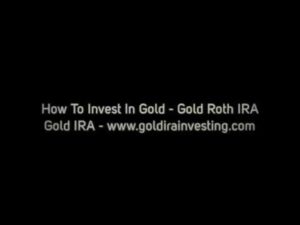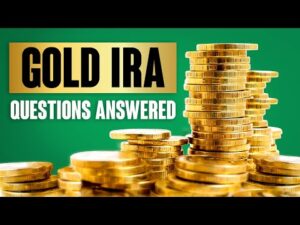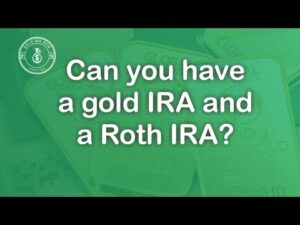
Bitcoin's Consolidation on 1-Hour Chart
Bitcoin's 1-hour chart shows a period of consolidation, with BTC's price movements lacking clear direction compared to longer timeframes. However, there was a notable drop to around $42,056, possibly indicating a purge of stop-loss orders or a brief panic sell-off following the approval of the spot bitcoin exchange-traded fund (ETF). Fortunately, the market quickly recovered from this dip.
Downtrend Signals on 4-Hour Chart
The 4-hour chart provides a clearer view of a downtrend, characterized by lower highs and lower lows. The volume during downward movements was significantly higher, suggesting stronger selling pressure. Resistance has formed near the $45,000 level, which previously acted as support. Currently, the path of least resistance appears to be on the downside, indicating bearish undertones in the market.
Confirmation of Downtrend on Daily Chart
The daily chart reinforces the longer-term downtrend observed in the 4-hour analysis. There is a significant long-term support area around $36,727, a level from which the price has previously experienced considerable rebounds. The current price action is confined within a range between this support and the approximate $45K resistance level. For those considering long-term positions, entry points near the bottom of this range, with confirmation of support holding, could be considered.
Oscillators and Moving Averages
Bitcoin's oscillators on Jan. 17, 2024, present a predominantly neutral stance. The relative strength index (RSI) stands at 47, the Stochastic at 17, and the commodity channel index (CCI) at -61, all indicating neutrality. However, the momentum indicator at -1365 and the moving average convergence/divergence (MACD) level at 83 suggest a bearish undertone to the overall neutral outlook.
Bitcoin's moving averages (MAs) also provide mixed signals. Shorter-term exponential moving averages (EMAs) and simple moving averages (SMAs) for 10, 20, and 30 days indicate negative sentiment, while longer-term averages for 50, 100, and 200 days suggest a strong bullish sentiment. This disparity highlights a tension between immediate bearish trends and a potential bullish undercurrent in the longer term.
Bullish Outlook
Despite the mixed signals and short-term bearish trends, the long-term outlook for BTC remains positive. The resilience shown at major support levels, combined with the buying interest reflected in the longer-term moving averages, suggests a potential upward trajectory. Investors with a long-term perspective may find this an opportune moment to consider entry, as the market could be gearing up for a bullish reversal.
Bearish Outlook
The bearish indicators dominating the short-term charts point to an ongoing downtrend for bitcoin. The lower highs and lower lows, particularly evident in the 4-hour chart, along with stronger selling pressure and bearish oscillator readings, suggest that the market could continue to face downward pressure. Short-term traders may find opportunities in short positions, taking advantage of pullbacks and resistance levels.
Register your email here to receive weekly price analysis updates directly to your inbox.
What are your thoughts on bitcoin's market action on Wednesday? Share your opinions in the comments section below.
Frequently Asked Questions
How to open a Precious Metal IRA
The first step in opening an Individual Retirement Account, (IRA), is to decide if it's something you want. You must complete Form 8606 to open an account. To determine which type of IRA you qualify for, you will need to fill out Form 5204. This form must be submitted within 60 days of the account opening. You can then start investing once you have this completed. You may also choose to contribute directly from your paycheck using payroll deduction.
You must complete Form 8903 if you choose a Roth IRA. Otherwise, the process will look identical to an existing IRA.
To qualify for a precious Metals IRA, there are specific requirements. You must be at least 18 years of age and have earned income to qualify for a precious metals IRA. You cannot earn more than $110,000 annually ($220,000 if married filing jointly) in any one tax year. Contributions must be made regularly. These rules apply whether you're contributing through an employer or directly from your paychecks.
You can invest in precious metals IRAs to buy gold, palladium and platinum. But, you'll only be able to purchase physical bullion. You won't have the ability to trade stocks or bonds.
Your precious metals IRA may also be used to invest in precious-metal companies. Some IRA providers offer this option.
An IRA is a great way to invest in precious metals. However, there are two important drawbacks. They aren't as liquid as bonds or stocks. It is therefore harder to sell them when required. They don't yield dividends like bonds and stocks. So, you'll lose money over time rather than gain it.
What is a Precious Metal IRA (IRA)?
A precious metal IRA allows for you to diversify your retirement savings in gold, silver, palladium and iridium. These are called “precious” metals because they're very hard to find and very valuable. They make excellent investments for your money and help you protect your future from inflation and economic instability.
Bullion is often used for precious metals. Bullion refers only to the actual metal.
Bullion can be purchased through many channels including online retailers and large coin dealers as well as some grocery stores.
With a precious metal IRA, you invest in bullion directly rather than purchasing shares of stock. This will ensure that you receive annual dividends.
Precious metal IRAs have no paperwork or annual fees. Instead, you pay a small percentage tax on the gains. Plus, you get free access to your funds whenever you want.
What are the benefits to having a gold IRA
An Individual Retirement Account (IRA) is the best way to put money towards retirement. It's not subject to tax until you withdraw it. You have total control over how much each year you take out. There are many types to choose from when it comes to IRAs. Some are better suited for people who want to save for college expenses. Some are better suited for investors who want higher returns. Roth IRAs permit individuals to contribute after the age 59 1/2. Any earnings earned at retirement are subject to tax. Once they start withdrawing money, however, the earnings aren’t subject to tax again. This account may be worth considering if you are looking to retire earlier.
A gold IRA is similar to other IRAs because it allows you to invest money in various asset classes. Unlike a regular IRA where you pay taxes on gains, a gold IRA doesn't require you to worry about taxation while you wait to get them. People who want to invest their money rather than spend it make gold IRA accounts a great option.
Another advantage to owning gold via an IRA is the ease of automatic withdraws. It means that you don’t have to remember to make deposits every month. To make sure you don't miss any payments, you can also set up direct deductions.
Finally, gold is one of the safest investment choices available today. It is not tied to any country so its value tends stay steady. Even in times of economic turmoil gold prices tend to remain stable. This makes it a great investment option to protect your savings from inflation.
Should you Invest In Gold For Retirement?
It depends on how much you have saved and if gold was available at the time you started saving. You can invest in both options if you aren't sure which option is best for you.
You can earn potential returns on your investment of gold. Retirees will find it an attractive investment.
While most investments offer fixed rates of return, gold tends to fluctuate. Because of this, gold's value can fluctuate over time.
However, this does not mean that gold should be avoided. This just means you need to account for fluctuations in your overall portfolio.
Another benefit of gold is that it's a tangible asset. Unlike stocks and bonds, gold is easier to store. It can be easily transported.
You can always access your gold as long as it is kept safe. Additionally, physical gold does not require storage fees.
Investing in gold can help protect against inflation. Gold prices are likely to rise with other commodities so it is a good way of protecting against rising costs.
It's also a good idea to have a portion your savings invested in something which isn't losing value. Gold rises in the face of a falling stock market.
Investing in gold has another advantage: you can sell it anytime you want. You can also liquidate your gold position at any time you need cash, just like stocks. You don't have to wait for retirement.
If you do decide to invest in gold, make sure to diversify your holdings. Don't put all of your eggs in one basket.
You shouldn't buy too little at once. Start with a few ounces. Then add more as needed.
It's not about getting rich fast. Instead, the goal here is to build enough wealth to not need to rely upon Social Security benefits.
Gold may not be the most attractive investment, but it could be a great complement to any retirement strategy.
Statistics
- Contribution limits$6,000 (49 and under) $7,000 (50 and up)$6,000 (49 and under) $7,000 (50 and up)$58,000 or 25% of your annual compensation (whichever is smaller) (lendedu.com)
- This is a 15% margin that has shown no stable direction of growth but fluctuates seemingly at random. (smartasset.com)
- If you accidentally make an improper transaction, the IRS will disallow it and count it as a withdrawal, so you would owe income tax on the item's value and, if you are younger than 59 ½, an additional 10% early withdrawal penalty. (forbes.com)
- Instead, the economy improved, stocks rebounded, and gold plunged, losing 28 percent of its value in 2013. (aarp.org)
- Gold is considered a collectible, and profits from a sale are taxed at a maximum rate of 28 percent. (aarp.org)
External Links
law.cornell.edu
- 7 U.S. Code SS 7 – Designation of boards of trade as contract markets
- 26 U.S. Code SS 408 – Individual retirement funds
finance.yahoo.com
irs.gov
investopedia.com
- Do You Need a Gold IRA to Get Retirement?
- What are the Options Types, Spreads and Example. Risk Metrics
How To
Tips to Invest in Gold
One of the most sought-after investment strategies is investing in gold. This is due to the many benefits of investing in gold. There are many ways to invest gold. Some people prefer to buy gold coins in physical form, while others prefer to invest in gold ETFs.
Before buying any kind of gold, you need to consider these things.
- First, make sure you check if your country allows you own gold. If it is, you can move on. Otherwise, you can look into buying gold from abroad.
- The second thing you need to do is decide what type of gold coins you want. You have options: you can choose from yellow gold, white or rose gold.
- You should also consider the price of gold. It is best to start small and work your way up. When purchasing gold, diversify your portfolio. Diversifying your portfolio should be a priority, including stocks, bonds and real estate.
- Lastly, you should never forget that gold prices change frequently. Therefore, you have to be aware of current trends.
—————————————————————————————————————————————————————————————-
By: Jamie Redman
Title: Bitcoin Technical Analysis: BTC Balances Above $42,000 Amidst Downtrend Signals
Sourced From: news.bitcoin.com/bitcoin-technical-analysis-btc-balances-above-42000-amidst-downtrend-signals/
Published Date: Wed, 17 Jan 2024 14:48:44 +0000












